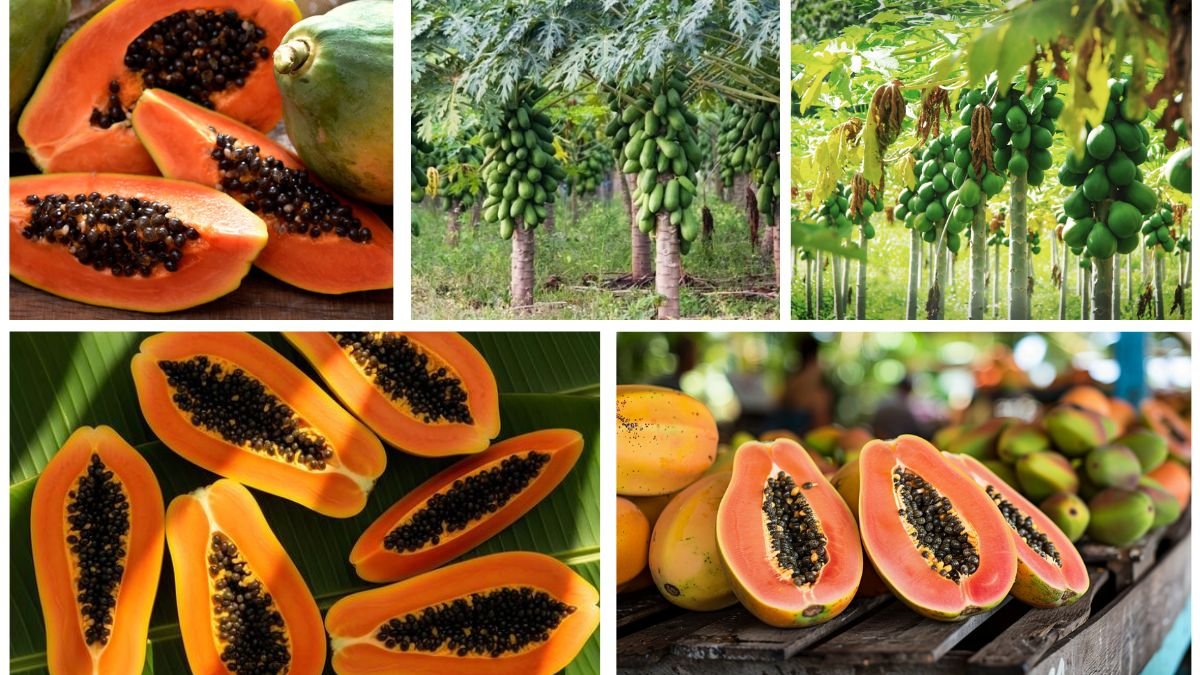Papaya, often called the “fruit of angels” by Christopher Columbus, is one of the most popular tropical fruits in the world. Known for its sweet flavor, vibrant orange flesh, and incredible health benefits, papaya is a staple fruit in many diets. From breakfast tables to juice bars and even skincare products, its versatility has made it a global favorite. But when it comes to large-scale production, one question often arises: Which country is the world’s top papaya producer?
The answer is India. With its tropical climate, fertile soil, and advanced cultivation techniques, India has firmly established itself as the world leader in papaya production. In this article, we’ll explore India’s dominance in papaya cultivation, the importance of papaya globally, and how this humble fruit has become an agricultural giant.
The Global Importance of Papaya
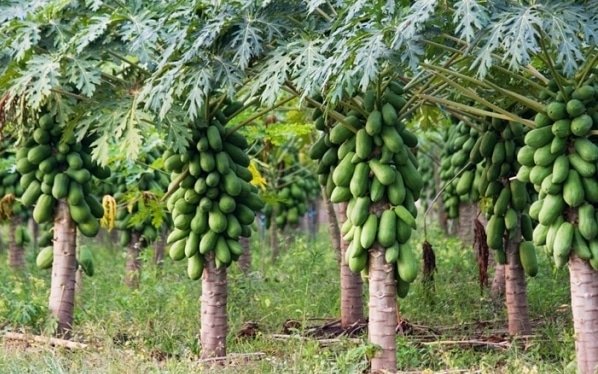
Papaya is more than just a delicious fruit—it is a source of nutrition, livelihood, and economic growth. Globally, papaya is valued for:
- Nutritional Benefits: Packed with vitamins A, C, and E, along with folate, potassium, and fiber, papayas support immunity, digestion, and skin health.
- Medicinal Uses: Papain, an enzyme derived from papaya, is used in pharmaceuticals, digestion aids, and even meat tenderizers.
- Industrial Applications: Beyond food consumption, papayas find applications in cosmetics and processed foods like jams, juices, and dried fruit.
- Export Value: Many tropical countries rely on papaya exports as part of their agricultural trade, creating jobs and contributing to their GDP.
India: The Global Leader in Papaya Production
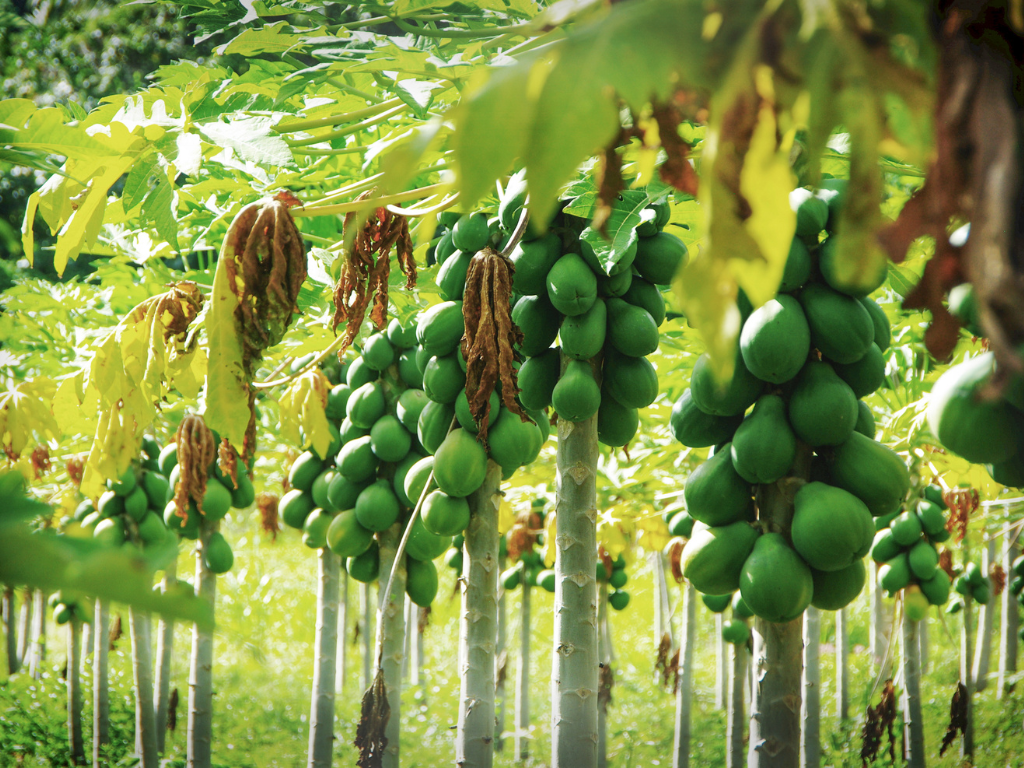
Production Scale
India produces over 6 million metric tons of papaya annually, making it the largest producer in the world. This accounts for nearly 40–45% of the global papaya supply, far surpassing other countries. The country’s favorable climatic conditions, ranging from tropical to subtropical regions, allow papaya cultivation year-round.
Major Papaya-Growing States
Several Indian states specialize in papaya cultivation, including:
- Andhra Pradesh
- Karnataka
- Gujarat
- Madhya Pradesh
- Maharashtra
- Tamil Nadu
These regions not only supply domestic markets but also contribute heavily to export demands.
Why India Excels in Papaya Farming
India’s dominance is driven by a combination of factors:
- Climate and Soil: Tropical and subtropical climates are ideal for papayas, which thrive in temperatures between 25–35°C.
- Variety Development: Indian agricultural research institutes have developed high-yield and disease-resistant papaya varieties, such as ‘Red Lady’ and ‘Pusa Delicious.’
- Farmer Adoption: Papaya is seen as a high-return crop for farmers due to its short gestation period (fruits within 8–10 months).
- Government Support: Initiatives like the National Horticulture Mission promote fruit cultivation, providing subsidies and technical guidance.
Other Major Papaya Producers Worldwide
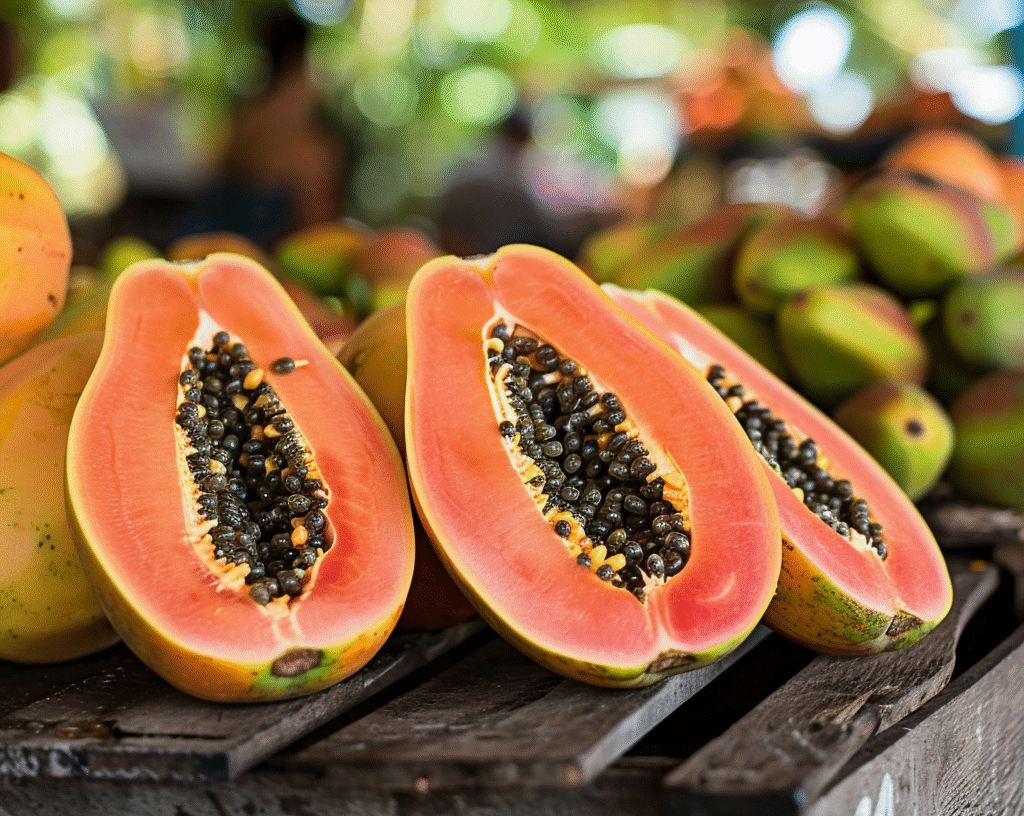
While India leads the pack, several other countries also play significant roles in global papaya production.
- Indonesia
Indonesia ranks second after India. With its tropical climate and large agricultural sector, papaya farming thrives, supplying both domestic and regional export markets. - Nigeria
In Africa, Nigeria stands out as a major papaya producer. The fruit is widely consumed domestically, though export potential remains underutilized. - Brazil
Brazil is a key player in both production and export. Its papayas, especially the “Solo” variety, are highly popular in Europe and North America. - Philippines
Known for cultivating papayas in its lush, tropical regions, the Philippines primarily serves domestic demand but also exports papayas to nearby Asian markets. - Mexico
Mexico is a major exporter, especially to the United States, due to geographical proximity and strong trade ties under agreements like USMCA.
Global Export and Trade of Papaya
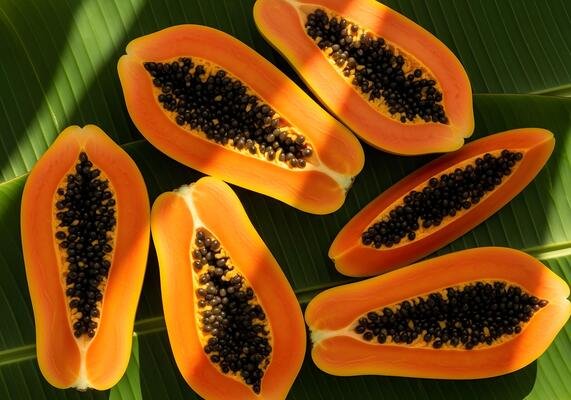
Though India dominates in production, it is not the largest exporter of papayas. Countries like Mexico and Brazil lead global papaya exports, particularly to North America and Europe. India, despite producing more, exports only a fraction of its output due to:
- High domestic demand
- Post-harvest losses and logistical challenges
- Focus on other high-value fruit exports like mangoes
Top Importing Countries
- United States: A massive importer, particularly from Mexico.
- European Union nations: Import papayas from Brazil and other tropical producers.
- Middle East markets: Sourcing from India and Southeast Asia.
Health Benefits Driving Papaya Demand
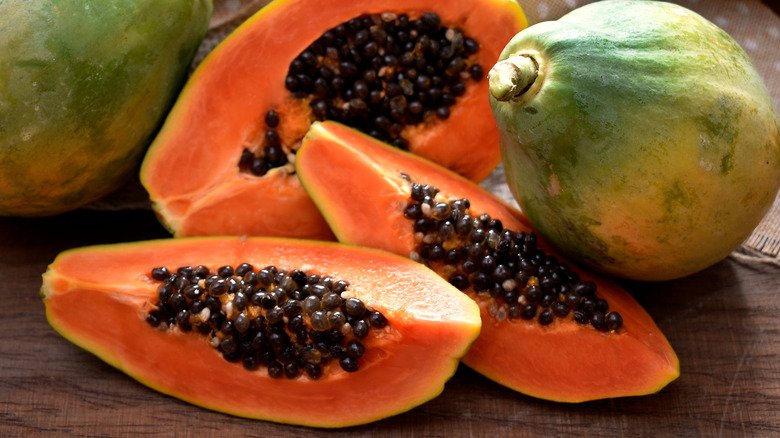
Papaya’s global demand is strongly tied to its numerous health benefits:
- Boosts Immunity: Rich in vitamin C, one papaya can fulfill more than 200% of daily requirements.
- Supports Digestion: The enzyme papain aids in protein digestion and reduces bloating.
- Heart Health: High levels of antioxidants, fiber, and potassium help maintain cardiovascular health.
- Skin and Hair Benefits: Papaya extracts are widely used in cosmetics for glowing skin and hair care.
With rising health consciousness worldwide, papaya’s popularity continues to soar.
Challenges in Papaya Production
Despite its success, papaya farming faces certain challenges:
- Disease Management: Viral diseases like Papaya Ring Spot Virus (PRSV) threaten yields.
- Short Shelf Life: Papayas are highly perishable, making export logistics difficult.
- Climate Sensitivity: Extreme weather conditions, such as droughts or heavy rains, can impact production.
- Post-Harvest Losses: Lack of proper cold storage and transport infrastructure often leads to wastage.
The Future of Global Papaya Production
The future of papaya farming looks promising, with demand projected to rise globally due to health trends and consumer preferences for tropical fruits. Innovations in:
- Cold chain logistics
- Disease-resistant hybrids
- Organic farming practices
…are expected to strengthen both production and trade.
India, with its vast production capacity, is well-positioned to expand its role in the export market if post-harvest infrastructure improves. Meanwhile, countries like Mexico and Brazil will likely maintain their strongholds in international trade.
Conclusion
So, which country is the world’s top papaya producer? The answer is clear—India leads by a wide margin, producing nearly half of the global papaya supply. With millions of tons harvested every year, India has turned papaya into one of its most successful horticultural crops.
While India dominates in production, other countries like Brazil, Mexico, Indonesia, and Nigeria contribute significantly to the global papaya market, especially in exports. Together, they ensure that this sweet, nutritious fruit reaches households around the globe.
Papaya’s journey from tropical orchards to breakfast bowls worldwide is a testament to its enduring popularity and health appeal. As demand grows, innovations in cultivation and trade will shape the fruit’s global future—ensuring that the “fruit of angels” continues to nourish generations to come.7
